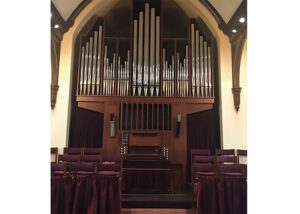This past Sunday I preached on Ephesians 4:4-16. I wanted to draw attention to two themes in the book. First is the abundance of language about abundance. Believers are filled with riches, power and wealth. Second, this is set within the context of the body of Christ which (who) fills all things. A broad theme in my recent reading is on the notion of capitalism as that body which currently (and rapidly) seeks to fill everything. From last Sunday’s sermon,
The basis of economic growth is of course to make more money. This requires more resources to make products and more markets in which to sell them, and ideally cheaper labour by which to make the products. Consider how coorporations scour the entire globe in search of resources and labour. Consider the manner in which resources that arguably should be public are increasingly coming under the umbrella of private coorporations. The issue of access to water comes readily to mind; the patenting of seeds for agriculture is another. Think of ever expanding marketing we face. Children are marketed, lifestyles are marketed, environmentalism is marketed, health and beauty, relationships, status; the list could go on forever. The public space for gathering is now the food court surrounded by the constant refrain of the mall to consume. High-interest money-lenders are popping up everywhere taking more money (and security) than they will ever give. The market of money knows no limit to its desire to bring everything under its control.
Borrowing heavily from Philip Goodchild I then went on talk about how the financial crisis exposes both the power and the fragility of contemporary capitalism. Even governments submit to its whims. Though the ‘limits’ of contemporary capitalism are also becoming more apparent (increase in material costs). In this way capitalism forms a mocking portrayal of an expanding and universal body which we participate in.
Also, borrowing heavily on Goodchild, I turned to the role of attention as a primary indicator of piety (whether ‘secular’ piety of religious). To what then does the body of Christ call our attention to? Here I returned to the Ephesians text and drew attention to what had seemed like a strange insertion for me.
[E]ach of us was given grace according to the measure of Christ’s gift. Therefore it is said, “When he ascended on high he made captivity itself a captive; he gave gifts to his people.” (When it says, “He ascended,” what does it mean but that he had also descended into the lower regions of the earth? He who descended is the same one who ascended far above all the heavens, so that he might fill all things.) Eph 4:7-10
Here I drew attention to Christ’s descent. The primary movement for the body of Christ is one of descent. It is after this movement that ascension occurs, captivity is held captive and gifts are released. Therefore our attention is turned to the descent. I described this as attention to suffering and vulnerability.
This is the paradox of the body of Christ. That in turning our attention to the vulnerability and suffering within and around us we enter in the joy of God’s grace; in feeling bound and helpless by the scope of suffering Christ binds bondage and frees us with his gifts of grace. We are called to draw near to that strange place where we face each other, where crying and laughing become almost indistinguishable. [I thought of the description of the Cairo protests as by one participant as a ‘wedding feast’]
I had a relatively strong reaction to this sermon both positive and negative. I ran into one group after the service vigorously discussing the implications of the sermon. I also ran into other individuals who felt that the message was too ambiguous and loosely connected. This sermon was part of a small series on ‘lay’ leadership. In this way I suppose I could (or should) have been a little more ‘practical’. However, I could not shake the notion that practicality in the church has typically meant ‘plugging into’ existing programs that are often ‘unplugged’ from pressing issues. While the Mennonite church may have a slightly better track-record in this regard my hope is that ‘abstract’ sermons like this one can eventually build a new framework for church expression.





